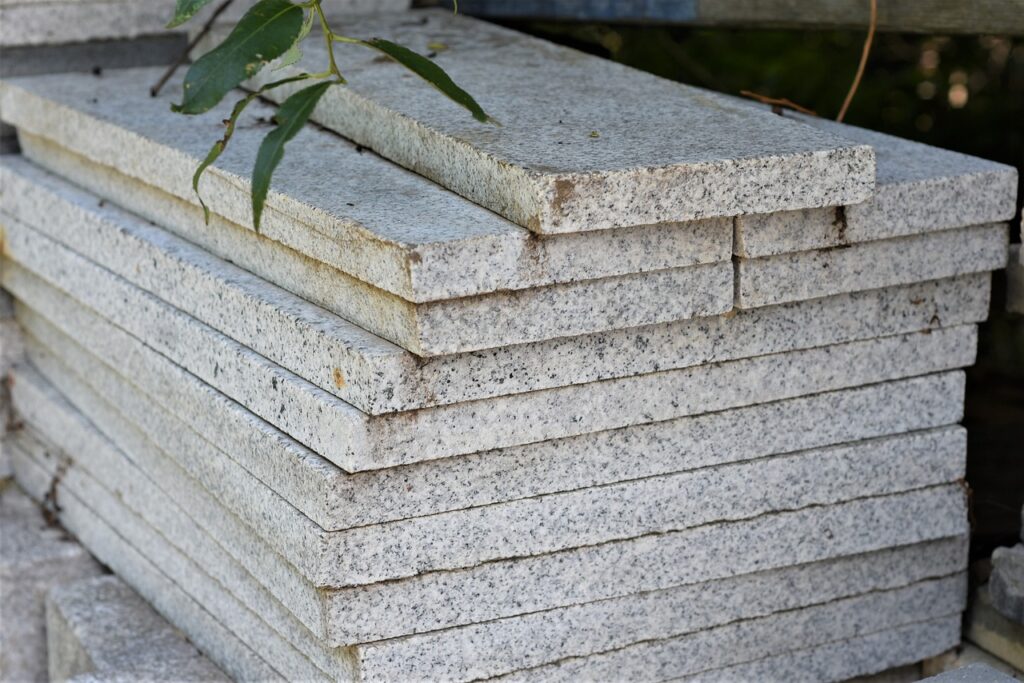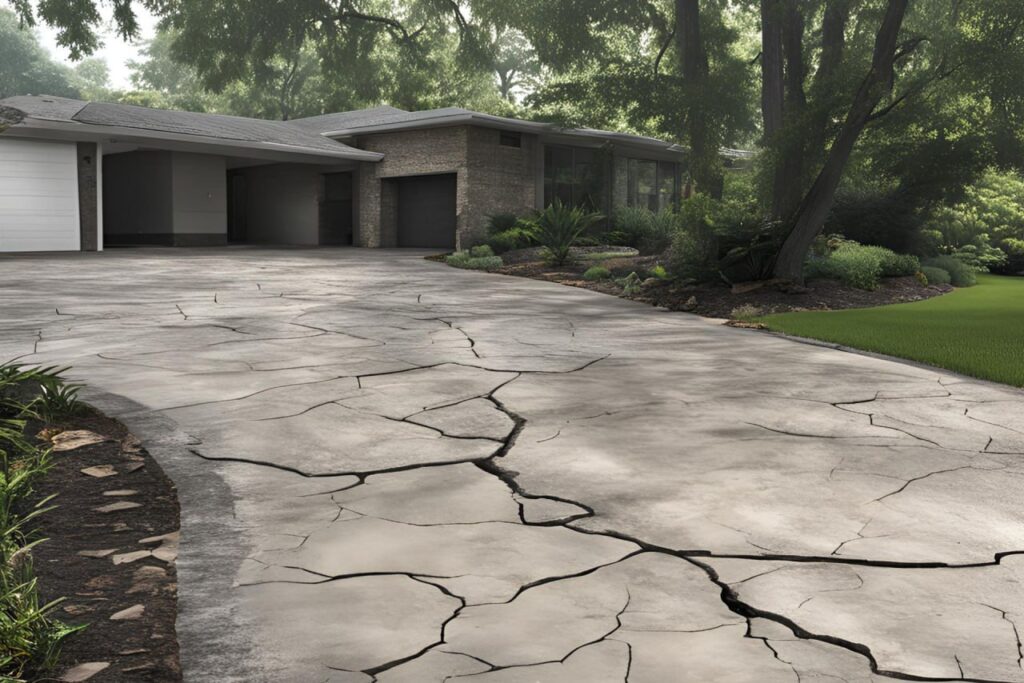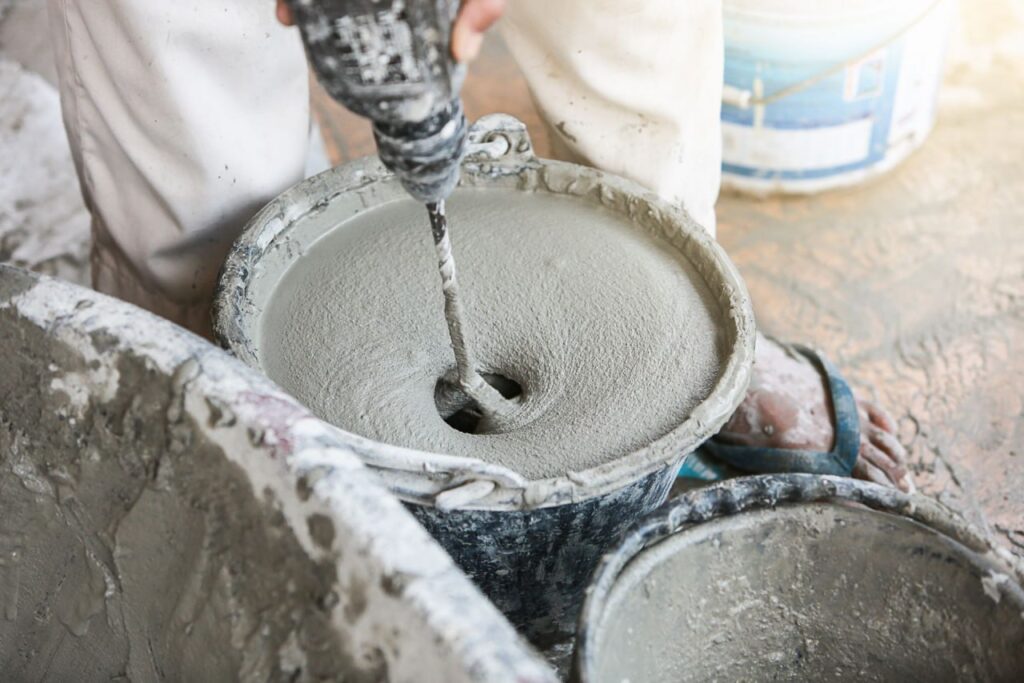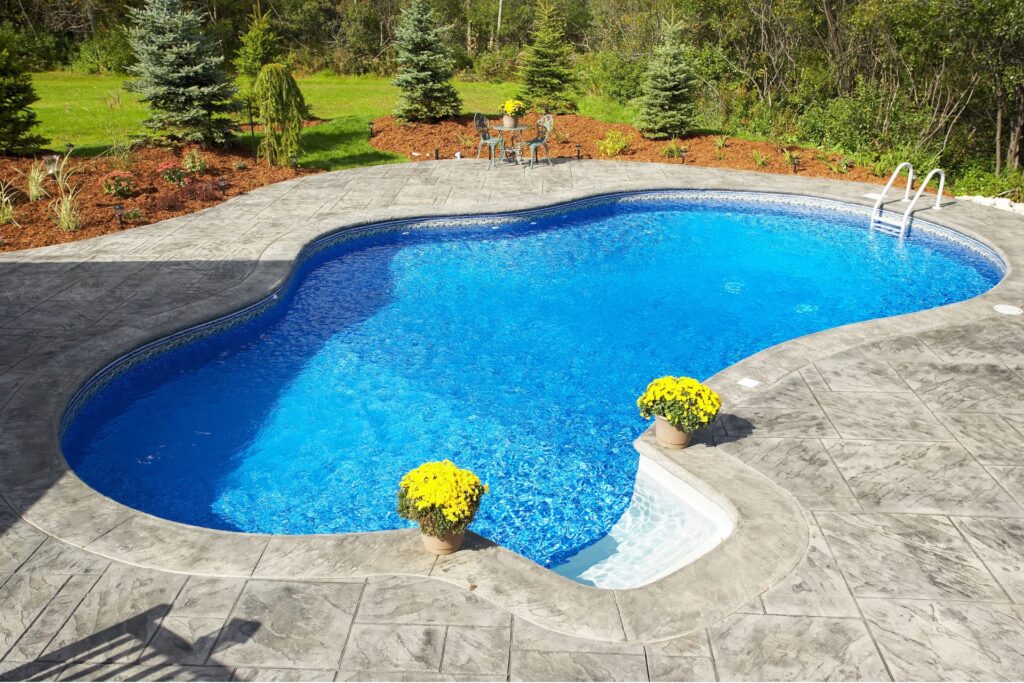Welcome to our comprehensive guide on choosing the best type of reinforcement for residential driveways. If you’re considering a new driveway or looking to enhance the durability of your existing one, understanding the right reinforcement options is crucial. In this article, we’ll explore the various types of reinforcement, their benefits, and how they can significantly extend the lifespan of your driveway. From steel rebar to fiber reinforcement, we’ll cover everything you need to know to make an informed decision that suits your specific needs and budget. Let’s dive into the world of driveway reinforcement and discover how to create a resilient and long-lasting surface for your home.
The best type of reinforcement for residential driveways depends on various factors including climate, soil conditions, and usage. Steel rebar offers high tensile strength and durability, making it ideal for heavy loads and high-traffic areas. Wire mesh is cost-effective and easy to install, suitable for standard residential use. Fiber reinforcement, incorporating synthetic fibers into the concrete mix, provides excellent crack resistance and ease of use, especially in climates with freeze-thaw cycles. Each option has its advantages, so choosing the right reinforcement involves evaluating your specific driveway needs and conditions.
- Understanding Driveway Reinforcement
- Common Types Of Reinforcement For Residential Driveways
- Factors To Consider When Choosing Reinforcement
- Installation Process
- Maintenance Tips For Reinforced Driveways
- Case Studies And Examples
- FAQs: About Which Type Of Reinforcement Is Best For Residential Driveways
- Conclusion
- Find A Professional Concrete Company Near You!
Understanding Driveway Reinforcement
Driveway reinforcement refers to the process of adding structural support to a driveway to enhance its strength and durability. This is typically achieved by incorporating materials such as steel rebar, wire mesh, or synthetic fibers into the concrete. Reinforcement helps to distribute loads more evenly across the surface, reducing the risk of cracks and other damage caused by the weight of vehicles and environmental factors.
In essence, reinforced driveways are designed to handle more stress and wear than non-reinforced ones. The added support from the reinforcement materials ensures that the concrete can withstand heavy loads, temperature fluctuations, and the natural settling of the ground beneath it.
Benefits
- Increased Durability: One of the primary benefits of reinforcing a driveway is the significant increase in its durability. Reinforced concrete can better resist the wear and tear caused by daily use, as well as the occasional heavy load from larger vehicles like trucks or RVs. This increased durability means that the driveway will maintain its structural integrity for a longer period, reducing the need for frequent repairs.
- Reduced Cracking: Cracks are a common issue with concrete driveways, often resulting from ground movement, temperature changes, or heavy loads. Reinforcement materials help to hold the concrete together, even when it experiences stress. This reduces the likelihood of cracks forming and spreading, ensuring a smoother and more stable surface.
- Extended Lifespan: With increased durability and reduced cracking, a reinforced driveway naturally enjoys an extended lifespan. Homeowners can expect their investment to last longer, providing a reliable and aesthetically pleasing surface for many years. This longevity also translates to cost savings over time, as the need for repairs and replacements is minimized.
- Improved Load Distribution: Reinforcement helps to distribute the weight of vehicles and other loads more evenly across the surface of the driveway. This even distribution prevents isolated stress points that can lead to damage and ensures that the entire surface bears the load more effectively. As a result, the driveway remains level and functional, even under heavy use.
- Resistance to Environmental Factors: Driveways are exposed to a variety of environmental factors, including temperature fluctuations, moisture, and freeze-thaw cycles. Reinforced driveways are better equipped to handle these conditions without suffering significant damage. The reinforcement materials provide additional stability and flexibility, allowing the driveway to expand and contract with changing temperatures without cracking.
Understanding the importance of driveway reinforcement is crucial for any homeowner looking to invest in a durable and long-lasting driveway. By incorporating materials like steel rebar, wire mesh, or synthetic fibers, reinforced driveways offer increased durability, reduced cracking, extended lifespan, improved load distribution, and resistance to environmental factors. These benefits make reinforced driveways a wise investment, providing peace of mind and significant cost savings over time.

Common Types Of Reinforcement For Residential Driveways
Steel Rebar
Steel rebar, or reinforcing bar, is a common material used in construction to provide additional strength to concrete structures. It is made from steel, which is known for its excellent tensile strength. The rebar is usually embedded within the concrete before it sets, creating a reinforced composite that can better withstand various stresses.
Advantages
- High Tensile Strength: One of the main benefits of steel rebar is its high tensile strength. This means it can handle stretching forces effectively, making the concrete structure much stronger and more resilient.
- Durability: Steel rebar is also highly durable. It can withstand significant loads and stresses without deforming or breaking, ensuring the longevity of the driveway.
- Load Distribution: By reinforcing the concrete with steel rebar, the load is distributed more evenly across the structure, reducing the risk of cracks and damage over time.
Disadvantages
- Cost: One of the primary downsides of steel rebar is its cost. It is more expensive compared to other reinforcement options like wire mesh.
- Susceptibility to Rust: Steel rebar can rust if not properly protected or if exposed to moisture over time. This rust can weaken the rebar and, subsequently, the overall structure of the driveway.
Wire Mesh
Wire mesh, also known as welded wire fabric, is another type of reinforcement used in concrete structures. It consists of a grid of intersecting steel wires welded together. This mesh is placed within the concrete slab before it sets, providing a framework that enhances the concrete’s strength.
Advantages
- Ease of Installation: Wire mesh is relatively easy to install. It can be quickly laid out over the area to be reinforced, making the construction process faster and more efficient.
- Cost-Effectiveness: Compared to steel rebar, wire mesh is generally more cost-effective. It provides good reinforcement at a lower cost, making it an attractive option for many homeowners.
- Improved Crack Resistance: The grid pattern of the wire mesh helps to control cracking in the concrete by holding the material together more effectively.
Disadvantages
- Less Strength: While wire mesh does provide reinforcement, it is not as strong as steel rebar. It may not be suitable for driveways that will bear very heavy loads.
- Installation Issues: If not properly installed, the wire mesh can end up near the bottom of the concrete slab instead of in the middle, where it is most effective. This can reduce its effectiveness as a reinforcement material.
Fiber Reinforcement
Fiber reinforcement involves mixing synthetic fibers into the concrete before it is poured. These fibers can be made from various materials, such as polypropylene, nylon, or glass. When mixed into the concrete, they help to improve its structural integrity and resistance to cracking.
Advantages
- Improved Crack Resistance: One of the significant benefits of fiber reinforcement is its ability to reduce cracking. The fibers help to hold the concrete together more effectively, minimizing the formation of cracks.
- Ease of Use: Fiber reinforcement is straightforward to use. The fibers are simply mixed into the concrete, eliminating the need for additional placement or installation steps.
- Uniform Reinforcement: Because the fibers are mixed throughout the concrete, they provide uniform reinforcement across the entire slab, enhancing overall durability.
Disadvantages
- Limited Use for Heavy Loads: While fiber reinforcement is excellent for reducing cracks, it may not provide sufficient strength for driveways that will support very heavy loads, such as large trucks.
- Cost: Depending on the type of fibers used, fiber reinforcement can be more expensive than wire mesh, though generally less costly than steel rebar.
- Potential for Clumping: If not properly mixed, fibers can clump together, leading to uneven distribution and reduced effectiveness.
By understanding the various types of reinforcement available for residential driveways, homeowners can make informed decisions that best suit their needs and budget, ensuring a durable and long-lasting driveway.

Factors To Consider When Choosing Reinforcement
Climate and Weather Conditions
- Impact on Materials: The local climate and weather conditions play a crucial role in selecting the right type of reinforcement for a driveway. For instance, areas with extreme temperature fluctuations can cause materials to expand and contract, potentially leading to cracks or structural weaknesses. In regions prone to heavy rainfall or snow, the reinforcement needs to withstand constant exposure to moisture, which can lead to corrosion in certain materials like steel. Conversely, in hot and dry climates, some materials might become brittle and lose their strength over time. Therefore, it’s essential to choose a reinforcement material that can endure the specific weather conditions of your location to ensure the longevity and durability of your driveway.
Soil Type and Ground Conditions
- Relevance: The type of soil and the ground conditions underneath your driveway significantly impact the choice of reinforcement. Soil stability and composition can vary greatly, from sandy and loose soils to heavy clay. Stable soils might require less intensive reinforcement, whereas unstable or expansive soils can exert additional pressure on the driveway structure, necessitating stronger reinforcement solutions. Ground conditions, including the presence of water tables or the potential for soil erosion, also dictate the type of reinforcement. For example, areas with high groundwater levels may benefit from reinforcements that resist water infiltration and maintain their structural integrity even when wet.
Driveway Usage
- Load Bearing Needs: The intended use of the driveway heavily influences the reinforcement decision. If the driveway will predominantly handle light vehicles like cars, the reinforcement requirements will differ compared to a driveway that needs to support heavier loads such as trucks or RVs. Frequent use by heavy vehicles necessitates reinforcement materials that can distribute weight effectively and resist compression and tension forces. Additionally, if the driveway is expected to handle high traffic volume, the reinforcement must be robust enough to prevent wear and tear over time. Considering the load-bearing needs ensures that the driveway remains functional and safe under varying types of traffic.
Budget Constraints
- Cost Analysis: Budget is often a deciding factor when choosing the type of reinforcement for a driveway. Different materials and reinforcement techniques come with varying costs, and it’s crucial to balance affordability with performance. For example, while steel reinforcement is highly durable and effective, it can be more expensive compared to alternatives like fiber-reinforced concrete. On the other hand, using a cheaper material might save money initially but could lead to higher maintenance costs in the long run if the material fails to withstand the conditions it is exposed to. Therefore, a detailed cost analysis that includes initial costs, installation expenses, and long-term maintenance requirements is essential. This approach helps homeowners make informed decisions that align with their budget while ensuring the structural integrity of their driveway.
Choosing the right reinforcement for a driveway is a complex decision that involves considering various factors. By understanding the impact of climate, soil type, usage, and budget, homeowners can select the most appropriate reinforcement that ensures durability, functionality, and cost-effectiveness.

Installation Process
Preparation
Site Preparation
Before any reinforcement work begins, it’s crucial to properly prepare the site. This involves a series of steps to ensure the area is ready for reinforcement and concrete pouring. First, clear the site of any debris, vegetation, or old concrete. This ensures a clean slate for the new work. Next, level the ground and compact the soil to create a stable base. If the soil is loose or uneven, it could compromise the integrity of the entire structure. Use a plate compactor or a similar tool to achieve a solid, even surface.
After leveling, set up formwork around the area where the concrete will be poured. The formwork acts as a mold, shaping the concrete and holding it in place until it cures. It’s usually made from wood or metal and should be securely anchored to prevent any movement during the pour. Finally, ensure proper drainage by installing a gravel base or a drainage system if necessary. This helps prevent water accumulation, which can weaken the foundation.
Placement of Reinforcement
Techniques
The placement of reinforcement, whether it’s rebar, wire mesh, or another type, is a critical step in ensuring the strength and durability of the concrete structure. For rebar, start by cutting it to the required lengths and laying it out according to the design plans. Use rebar chairs or supports to elevate the rebar off the ground, ensuring it will be fully encased in concrete. This prevents the rebar from sitting on the ground, which can lead to corrosion and reduced structural integrity.
When placing wire mesh, roll it out over the prepared site and cut it to fit. Overlap the edges of the mesh sheets by several inches to maintain structural continuity. Secure the mesh with ties or clips to prevent shifting during the concrete pour. For both rebar and wire mesh, ensure proper spacing as specified in the design plans. This spacing is crucial for distributing the load evenly across the concrete.
Pouring Concrete
Integration
Integrating the reinforcement with the concrete pour requires precision and care. Begin by pouring the concrete into the formwork in small sections. Use a concrete vibrator or a similar tool to eliminate air pockets and ensure the concrete settles evenly around the reinforcement. This step is vital as air pockets can weaken the concrete and lead to structural failures.
As you continue pouring, periodically check the position of the reinforcement to ensure it hasn’t shifted. The goal is to have the reinforcement fully encased in concrete, with no parts exposed. This full encasement protects the reinforcement from corrosion and ensures it works effectively to strengthen the concrete. Smooth out the surface of the concrete as you pour to create an even finish.
Curing
Importance
Proper curing is essential for the strength and durability of reinforced concrete. Curing is the process of maintaining adequate moisture, temperature, and time to allow the concrete to achieve its intended strength. Immediately after pouring, cover the concrete with plastic sheeting or wet burlap to retain moisture. This prevents the surface from drying out too quickly, which can cause cracks.
Keep the concrete moist for at least seven days, or longer in colder weather. This can be done by periodically spraying it with water or using curing compounds that seal in moisture. The curing process allows the concrete to hydrate fully, developing the necessary strength and durability. Neglecting proper curing can result in weak, brittle concrete that is prone to cracking and other forms of damage.
By following these detailed steps, you can ensure a successful reinforcement and concrete installation process that stands the test of time.
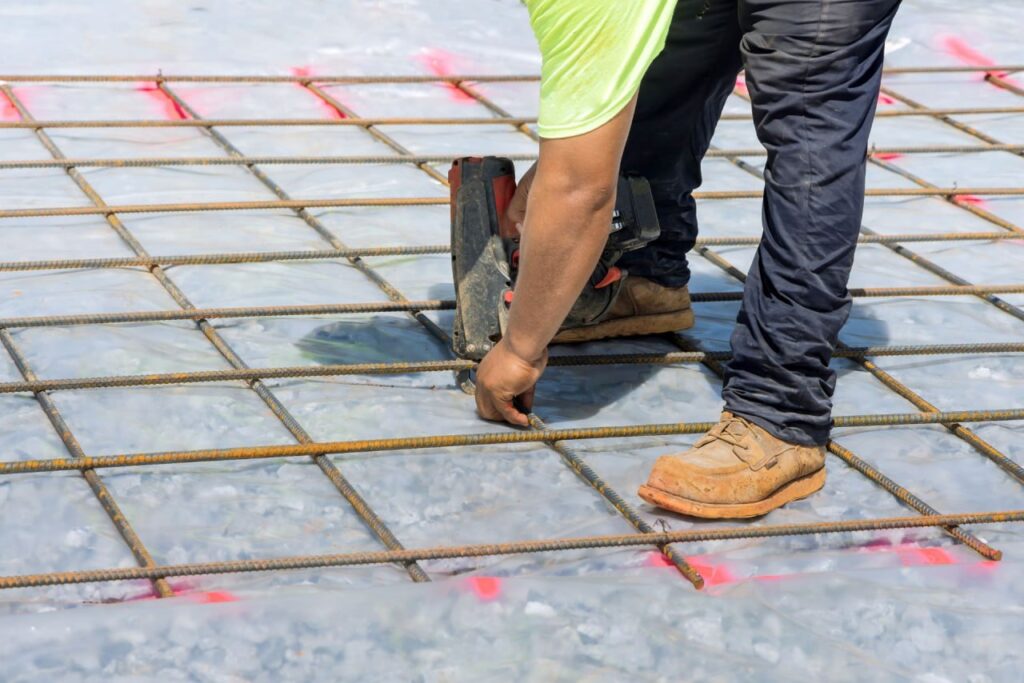
Maintenance Tips For Reinforced Driveways
Maintaining your reinforced driveway is essential to ensure its longevity and aesthetic appeal. Here are some practical tips to help you keep your driveway in top condition.
Regular Inspection
Regular inspections are crucial for identifying potential issues before they become major problems. Here’s how to effectively inspect your driveway:
- Frequency: Aim to inspect your driveway at least twice a year, preferably in the spring and fall. This helps you catch any damage caused by winter weather or summer heat.
- What to Look For: During your inspection, keep an eye out for the following:
- Cracks and Fissures: Small cracks can lead to larger issues if not addressed promptly.
- Discoloration: Color changes can indicate water damage or the start of mold growth.
- Uneven Surfaces: Areas that are sinking or lifting can be signs of a compromised foundation.
- Weeds and Grass: Vegetation growing through cracks can exacerbate damage by widening the gaps over time.
By staying vigilant and inspecting your driveway regularly, you can prevent minor issues from turning into costly repairs.
Repairing Cracks
Cracks in your driveway can worsen if left unattended. Here’s how you can address them effectively:
Methods
- For Minor Cracks: Use a concrete crack filler, which can be found at most hardware stores. Clean the crack thoroughly, remove any debris, and apply the filler according to the manufacturer’s instructions. Smooth it out with a putty knife and allow it to dry.
- For Larger Cracks: If the crack is more significant, you might need a concrete patching compound. Again, clean the area, apply the patching compound, and smooth it out. For best results, consider using a bonding agent to help the patch adhere better to the existing concrete.
- Preventative Measures: To prevent cracks from forming, avoid parking heavy vehicles in the same spot for extended periods and keep sharp objects like shovels and snowplows from scraping the surface.
By addressing cracks promptly, you can maintain the structural integrity of your driveway and extend its lifespan.
Cleaning and Sealing
Keeping your driveway clean and sealed is essential for protecting it from the elements and daily wear and tear. Here’s how to do it:
Routine Maintenance
- Cleaning: Regularly sweep your driveway to remove leaves, dirt, and debris. For deeper cleaning, use a pressure washer to remove grime and stains. Be cautious with the pressure setting to avoid damaging the concrete.
- Sealing: Sealing your driveway helps protect it from water damage, oil stains, and UV rays. Apply a high-quality concrete sealer every 2-3 years. Before sealing, ensure the driveway is thoroughly cleaned and any cracks are repaired. Follow the sealer’s instructions for application, usually using a roller or sprayer, and allow it to dry completely before use.
Maintaining a clean and sealed driveway not only enhances its appearance but also protects it from potential damage, ensuring it lasts for many years.
By following these maintenance tips, you can keep your reinforced driveway in excellent condition, preserving its functionality and beauty while saving on costly repairs in the long run.

Case Studies And Examples
Real-Life Examples
Success Stories
Sharing real-life success stories about residential driveway reinforcements is a powerful way to illustrate the benefits and effectiveness of this construction technique. Here are a few notable examples that highlight the positive outcomes achieved through proper reinforcement:
1. The Smith Family Driveway in Auckland: The Smith family had a concrete driveway that began to show significant cracks and wear over time. They opted for a reinforcement project that included using steel rebar and a high-strength concrete mix. After the reinforcement, the driveway not only looked brand new but also demonstrated improved durability and load-bearing capacity. This project extended the driveway’s life by an estimated 20 years, providing a robust and long-lasting solution.
2. The Thompson Estate in Wellington: The Thompson estate faced issues with its expansive driveway due to soil settlement and heavy vehicle use. They decided to reinforce their driveway using a combination of fiber-reinforced concrete and geotextile fabric. This approach effectively distributed the load and prevented further cracking. Post-reinforcement, the driveway handled heavy traffic without any issues, and the family reported significant satisfaction with the reduced maintenance costs and increased property value.
3. The Johnsons’ Coastal Property in Christchurch: Living near the coast, the Johnsons experienced frequent issues with their concrete driveway due to saltwater corrosion and temperature fluctuations. By reinforcing their driveway with epoxy-coated rebar and adding a protective sealant layer, they were able to mitigate these issues. The new driveway not only withstood the harsh coastal conditions but also provided a smooth and aesthetically pleasing surface, enhancing the overall curb appeal of their home.
Comparative Analysis
Before and After
A comparative analysis of driveways before and after reinforcement can vividly illustrate the transformative effects of this process. Here are some key points of comparison:
Structural Integrity
- Before: Many driveways suffer from cracks, potholes, and uneven surfaces due to various factors like weather conditions, heavy usage, and poor initial construction.
- After: Reinforced driveways show a marked improvement in structural integrity. Cracks are repaired and reinforced, and the overall surface is more resilient to stress and environmental factors. This results in a smoother, more reliable surface that can better withstand heavy loads.
Aesthetic Appeal
- Before: Driveways with visible cracks, stains, and damage can significantly detract from the aesthetic appeal of a property. They often appear neglected and can be an eyesore.
- After: Post-reinforcement, driveways often look brand new. The reinforcement process typically includes resurfacing and sealing, which not only repairs but also rejuvenates the appearance. This leads to a clean, attractive driveway that enhances the property’s curb appeal.
Maintenance Requirements
- Before: Driveways in poor condition often require frequent repairs and maintenance, which can be both time-consuming and costly. Cracks and potholes need regular attention to prevent further deterioration.
- After: Reinforced driveways require significantly less maintenance. The enhanced structural integrity means fewer repairs are needed, and the durable surface can withstand wear and tear more effectively. This translates to long-term cost savings and reduced hassle for homeowners.
Property Value
- Before: A damaged driveway can negatively impact the overall value of a property. Potential buyers may see it as a liability and factor the cost of repairs into their offer.
- After: A reinforced and well-maintained driveway can increase a property’s value. It’s seen as a long-term investment in the property’s infrastructure, providing peace of mind to potential buyers and boosting the marketability of the home.
In conclusion, the real-life examples and comparative analysis of driveways before and after reinforcement underscore the significant benefits of investing in this process. From enhanced durability and aesthetic appeal to reduced maintenance costs and increased property value, driveway reinforcement proves to be a worthwhile investment for homeowners.

FAQs: About Which Type Of Reinforcement Is Best For Residential Driveways
Conclusion
In conclusion, this blog post has thoroughly explored the various types of reinforcement suitable for residential driveways, highlighting their unique benefits and drawbacks. From the traditional durability of steel rebar to the modern advantages of fiber reinforcement, we’ve covered how each option performs under different conditions and requirements. When making a final decision, it’s crucial to consider factors such as budget, climate, and specific usage needs. Ultimately, the best choice depends on your situation and goals. We recommend consulting with a professional to ensure that your driveway project meets all necessary standards and delivers lasting satisfaction. Assess your needs carefully and seek expert advice to achieve the optimal outcome for your driveway.
Find A Professional Concrete Company Near You!
- Asphalt Carpark Construction Wairarapa
- Asphalt Contractors Auckland
- Asphalt Contractors Hawkes Bay
- Asphalt Dannevirke
- Asphalt Driveways Tauranga
- Christchurch Concrete Services
- Concrete Contractors Nelson
- Concrete Contractors Tauranga
- Concrete Dannevirke
- Concrete Driveways Lower Hutt
- Concrete Driveways Upper Hutt
- Concrete Floor Slabs Kapiti Coast
- Concrete Foundations Kapiti
- Concrete Layers Auckland
- Concrete Layers Cambridge
- Concrete Layers Hamilton
- Concrete Layers Invercargill
- Concrete Layers Kapiti
- Concrete Layers Leigh
- Concrete Layers Levin
- Concrete Layers Lower Hutt
- Concrete Layers Mangawhai
- Concrete Layers Matakana
- Concrete Layers North Shore
- Concrete Layers Northland
- Concrete Layers Orewa
- Concrete Layers Palmerston North
- Concrete Layers Pukekohe
- Concrete Layers Rodney
- Concrete Layers Silverdale
- Concrete Layers Te Awamutu
- Concrete Layers Upper Hutt
- Concrete Layers Waikato
- Concrete Layers Warkworth
- Concrete Layers Wellington
- Concrete Layers Wellsford
- Concrete Manuwatu
- Concrete Services Rotorua
- Concrete Whangarei
- Hastings Concrete Company
- Hawkes Bay Concrete Company
- Napier Concrete Company
About the Author:
Mike Veail is a recognized digital marketing expert with over 6 years of experience in helping tradespeople and small businesses thrive online. A former quantity surveyor, Mike combines deep industry knowledge with hands-on expertise in SEO and Google Ads. His marketing strategies are tailored to the specific needs of the trades sector, helping businesses increase visibility and generate more leads through proven, ethical methods.
Mike has successfully partnered with numerous companies, establishing a track record of delivering measurable results. His work has been featured across various platforms that showcase his expertise in lead generation and online marketing for the trades sector.
Learn more about Mike's experience and services at https://theleadguy.online or follow him on social media:




